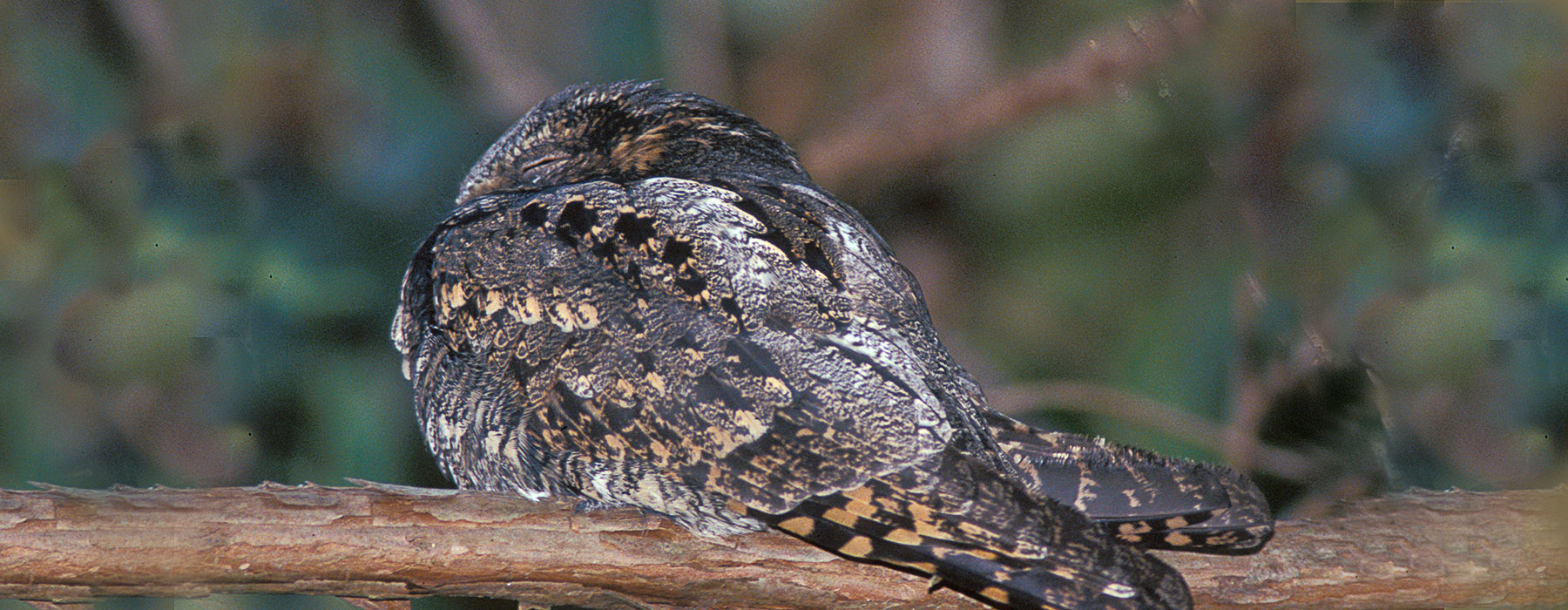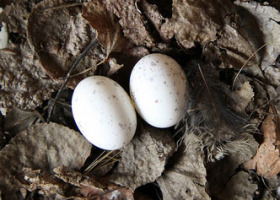The eerie chant of the Eastern Whip-poor-will was once heard throughout the Northeast, its unmistakable call a welcome harbinger of spring.
While their distinctive onomatopoeic 'whip-poor-will call is easily recognized, they are seldom seen and little is known about this cryptically plumed nightjar. Over the past several decades, as grasslands and shrublands revert back to forest or are developed, the former haunts of this aerial insectivore have grown quiet and the Eastern Whip-poor-will has disappeared from much of its former range.
Natural History
The Eastern Whip-poor-will is a nocturnal, aerial insectivore found in edge habitat throughout much of the eastern United States and into Canada.
Though Whip-poor-wills are most commonly heard calling at dawn and dusk, they will forage and call on calm, clear nights when the moon is at least half full. Becoming active roughly half an hour after sunset, these birds fly silently into open areas, such as grasslands or farms, in search of insects. More than half their diet consists of moths, though they are known to eat beetles, ants, and wasps as well.
During the day, Whip-poor-wills roost on the ground or on low-lying branches, usually in mixed forest with little or no underbrush.
Whip-poor-wills do not build a nest. The female lays two eggs on the forest floor, usually in a shady, well-drained patch of ground amidst leaf litter. The eggs, chicks, and adults are well camouflaged, affording them some level of protection from predation.
Whip-poor-wills breed from Saskatchewan to the Maritimes, down the eastern seaboard to the northern Georgia, then west to Kansas and into Minnesota. They are considered medium distance migrants and arrive on their breeding grounds beginning in March, then leave beginning in September to overwinter in the se U.S. and Central America. Though usually solitary birds, Whip-poor-wills will form loose flocks during their fall migration.
Cool Whip-poor-will Facts
- Whip-poor-wills lay their eggs so that they hatch, on average, 10 days before a full moon. Why? So they can forage all night by the light of the moon and catch enough insects to feed their new young.
- The Whip-poor-will was recently separated into two species based on differences in DNA. In 2011, the Whip-poor-will became the Eastern and the Mexican Whip-poor-wills.
- Whip-poor-wills have a reflective structure behind their retina called a tapetum lucidum. This structure allows more light to reach their photoreceptors and is what causes their eyes to glow in the dark.
Conservation Action
In response to documented declines in the Eastern Whip-poor-will populations, the species was listed as Threatened in Vermont in 2011. It is unclear what has caused these declines, but some scientists think that it might be from forest maturation and development leading to reduction of edge habitat; predation from cats, raccoons, and other predators known to roam the forest edges; decline of large moth populations from pesticides and introduced parasitoids used to control other moths that are forest pests.
As a first step towards a better understanding of the habitat characteristics Eastern Whip-poor-wills use in Vermont, and obtaining more precise estimate of their current population size and important breeding locations, VCE is conducting surveys in different regions of Vermont.


